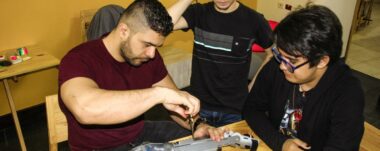Why Costa Rica has no army?
The abolition of the Costa Rican army refers to the suppression of all Costa Rican armed forces carried out on December 1, 1948 after the end of the civil war of that year. The event in which the armed forces were abolished was held at the former Bellavista Barracks, today the National Museum of Costa Rica, and was headed by the president of the Founding Board of the Second Republic, José Figueres Ferrer.
Since the abolition of the army, the country has only resorted to military forces on two occasions: in 1955 to prevent an invasion from Nicaragua by expatriates and with the support of the Somoza government, and in 1965 when it sent 21 policemen as part of the Inter-American Peace Force of the Organization of American States during the U.S. occupation of the Dominican Republic.
Between 1823 and 1870, Costa Rica experienced several political conflicts that were resolved militarily. During these years, armed groups were generally organized and then disbanded once the conflict was over. Nevertheless, in the main cities of the country there were different barracks and command posts in charge of maintaining order and where the army artillery was kept. At the end of the 19th century, the number of Costa Rican army contingents increased from around 15,000 in 1874 to around 50,000 in 1900.
On May 11, 1871, under the government of Tomás Guardia Gutiérrez, the Military Code of the Republic of Costa Rica was issued. In this code, military crimes and the punishments imposed were enunciated and it was mentioned that the military courts were the ones to follow the cases with the exception of the punishment of death penalty or expulsion, which would be in charge of the War Council.1 On January 21, 1884, a new code was issued, which was repealed to reestablish the code issued in 1871. Between 1886 and 1900 other laws and military documents were approved.
Between 1884 and 1914, the Costa Rican army went through a process of institutionalization, during which a higher percentage of the government budget was allocated to the army for military instruction and payment of salaries. Despite this, starting in 1921, the central government began to allocate more money from its budget to education and health, and consequently, the army’s ranks were cut and more resources were allocated to the police. As a result, the army was weakened as a military institution.
Between 1946 and 1948, the Costa Rican armed forces were suffering a long process of weakening. They were without armaments, without an adequate organization, with economic difficulties that prevented them from carrying out their functions effectively, and with a weak investment by the central government.
Between the months of March and April 1948, the civil war broke out, caused mainly by the annulment of the 1948 elections by the Congress, which did not recognize the triumph of the opposition candidate Otilio Ulate Blanco. This led to the revolution that brought José Figueres Ferrer to power.
At the end of the civil war and when the Government Junta took power, Figueres found an army in total disorganization, without war materials, and the few weapons they had were useless and rather constituted a mock army and not a real military force. Thus, on December 1, 1948, he decided to dissolve the army in a symbolic act carried out at the Bellavista Barracks, where he demolished with a sledgehammer a battlement on the west wall of the barracks.
Abolition of the army
On October 11, 1948, José Figueres Ferrer, by means of Decree No. 749, abolished the army as a permanent institution. Consequently, and as the document indicates, “The Founding Board of the Second Republic officially declares the National Army dissolved, as it considers the existence of a good police force sufficient for the security of our country”.
In Act No. 178 of the new Political Constitution of October 31, 1949, appears the approval of constitutional article number 12, which suppresses the army as a permanent institution and creates the civil police to safeguard public order; this allowed using the budgets previously assigned to the army mainly for the development of the educational apparatus, and also, the Bellavista Barracks were transferred to the University of Costa Rica so that the National Museum could be installed there. When this Constitution came into force a few weeks later, the abolition of the army in the Costa Rican political system acquired constitutional rank.
On December 1, in a ceremony held at the Bellavista Barracks, attended by students, members of the diplomatic corps and national personalities, President Figueres knocked down a wall of a tower of the barracks with a sledgehammer, making public the decision of the government junta to abolish the army.
Source: Wikipedia




